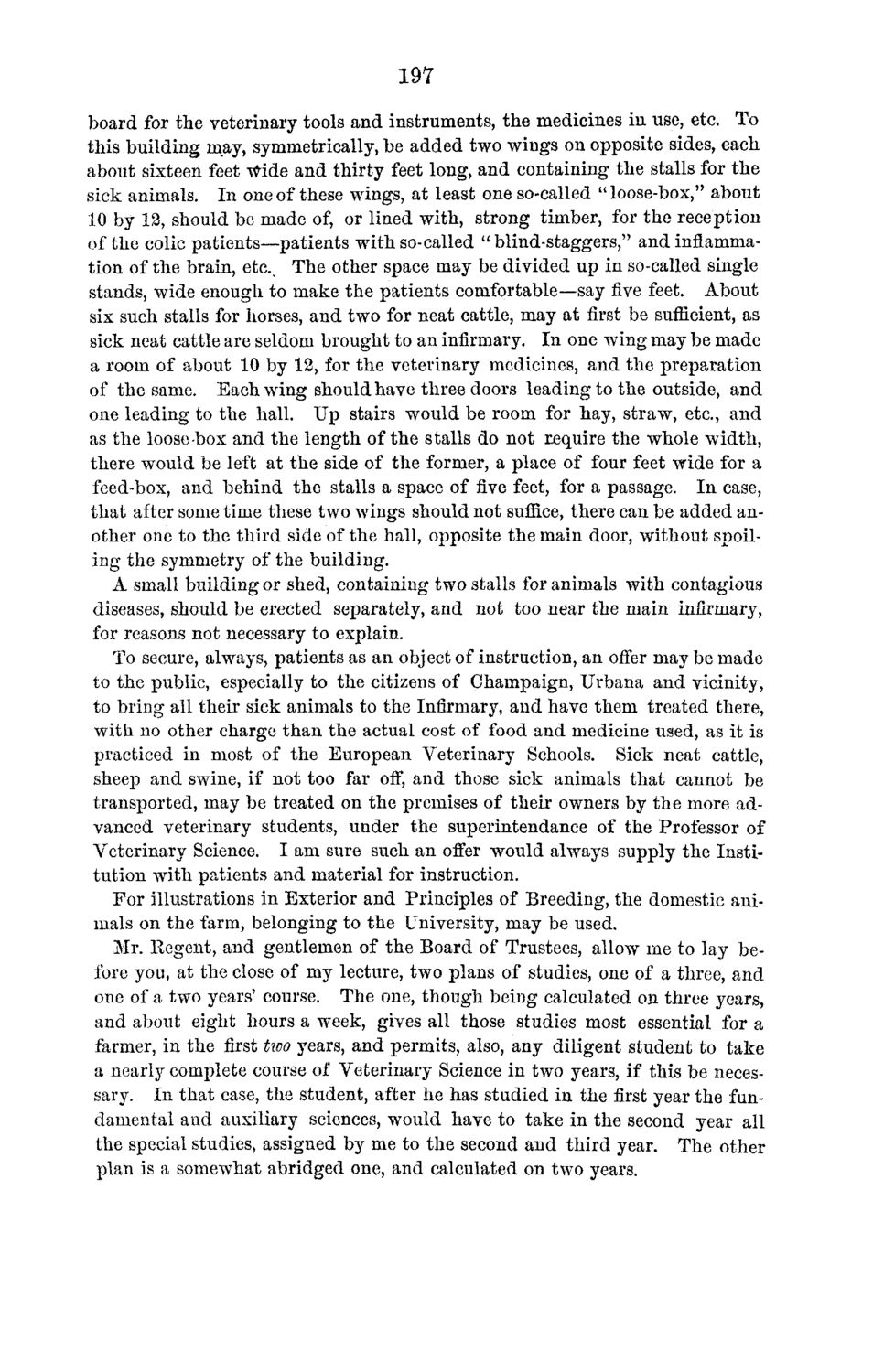| |
| |
Caption: Board of Trustees Minutes - 1870
This is a reduced-resolution page image for fast online browsing.

EXTRACTED TEXT FROM PAGE:
197 board for the veterinary tools and instruments, the medicines in use, etc. To this building may, symmetrically, be added two wings on opposite sides, each about sixteen feet wide and thirty feet long, and containing the stalls for the sick animals. In one of these wings, at least one so-called " loose-box,'* about 10 by 12, should be made of, or lined with, strong timber, for the reception of the colic patients—patients with so-called "blind-staggers," and inflammation of the brain, etcv The other space may be divided up in so-called single stands, wide enough to make the patients comfortable—say five feet. About six such stalls for horses, and two for neat cattle, may at first be sufficient, as sick neat cattle are seldom brought to an infirmary. In one wing may be made a room of about 10 by 12, for the veterinary medicines, and the preparation of the same. Each wing should have three doors leading to the outside, and one leading to the hall. Up stairs would be room for hay, straw, etc., and as the loose-box and the length of the stalls do not require the whole width, there would be left at the side of the former, a place of four feet wide for a feed-box, and behind the stalls a space of five feet, for a passage. In case, that after some time these two wings should not suffice, there can be added another one to the third side of the hall, opposite the main door, without spoiling the symmetry of the building. A small building or shed, containing two stalls for animals with contagious diseases, should be erected separately, and not too near the main infirmary, for reasons not necessary to explain. To secure, always, patients as an object of instruction, an offer maybe made to the public, especially to the citizens of Champaign, Urbana and vicinity, to bring all their sick animals to the Infirmary, and have them treated there, with no other charge than the actual cost of food and medicine used, as it is practiced in most of the European Veterinary Schools. Sick neat cattle, sheep and swine, if not too far off, and those sick animals that cannot be transported, may be treated on the premises of their owners by the more advanced veterinary students, under the superintendance of the Professor of Veterinary Science. I am sure such an offer would always supply the Institution with patients and material for instruction. For illustrations in Exterior and Principles of Breeding, the domestic animals on the farm, belonging to the University, may be used. Mr. Regent, and gentlemen of the Board of Trustees, allow me to lay before you, at the close of my lecture, two plans of studies, one of a three, and one of a two years' course. The one, though being calculated on three years, and about eight hours a week, gives all those studies most essential for a farmer, in the first two years, and permits, also, any diligent student to take a nearly complete course of Veterinary Science in two years, if this be necessary. In that case, the student, after he has studied in the first year the fundamental and auxiliary sciences, would have to take in the second year all the special studies, assigned by me to the second and third year. The other plan is a somewhat abridged one, and calculated on two years.
| |